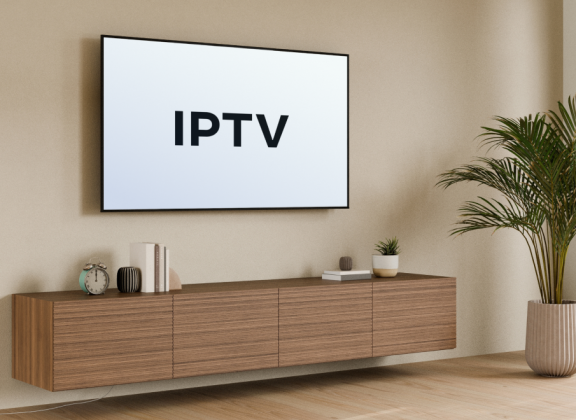Digital television has surged in popularity, and with that, more users are now exploring methods to watch IPTV without needing any extra equipment. If you own a Smart TV, you can easily set up IPTV on a Smart TV without a set-top box by installing a dedicated IPTV application.
This article will guide you through the process of how to install an IPTV app on Smart TV and complete the necessary IPTV configuration without relying on an external device, while also offering practical tips to optimize the service.
Benefits of Using IPTV on a Smart TV Without a Set-Top Box
Modern Smart TVs are equipped with native capabilities that support streaming on Smart TV directly, eliminating the need for a separate set-top box. This approach not only simplifies your setup but also helps reduce clutter and expenses associated with additional hardware.
With this method, you can enjoy watching IPTV on a Smart TV without a box—all you need is your TV and a reliable internet connection.
Choosing and Installing the IPTV Application
The initial step is selecting an appropriate IPTV application that meets your needs. These apps allow you to manage playlists, support multiple playlist formats, and offer an intuitive user interface.
To install an IPTV app on a Smart TV, open your TV’s app store (such as the Google Play Store for Android TV or the native app marketplace on other platforms). Search using keywords like “IPTV” or “Smart IPTV” and review the ratings and user feedback before proceeding with the installation. Once you click the install button, the app will download and set up on your device within a few minutes.
Step-by-Step IPTV Setup on Smart TV Without an External Device
After the installation is complete, you’ll need to configure the application to start receiving content. Follow this IPTV setup guide for a smooth setup process:
Begin by launching the app and exploring its interface. Most IPTV apps provide a built-in tutorial or guide to help you get started. If the app requires registration, complete the necessary sign-up steps.
Next, you’ll need to add IPTV channels to your Smart TV. Obtain a channel playlist—typically in M3U format—either from your IPTV provider or another verified source (ensuring its current and legal status). Within the application, locate the playlist import section, and either paste in the URL or upload the file containing your channel list. After adding channels, verify your internet connection by checking the network settings for IPTV. Configure your connection via Wi-Fi or Ethernet, if available. For the best results, perform a Wi-Fi IPTV setup on a stable network with sufficient bandwidth to prevent buffering and interruptions.
Finally, adjust any additional settings such as user interface preferences and video quality, and enable features like the Electronic Program Guide (EPG) if the app supports them. These additional options allow you to fine-tune the viewing experience based on your connection speed and personal preferences.
Troubleshooting and Optimization
Even after a successful setup, you may encounter issues such as buffering or missing channels. If this happens, first, check your internet speed and consider rebooting your router if necessary. Also ensure that your channel playlist is up-to-date and free from obsolete links.
Keeping the IPTV application updated to the latest version is crucial as developers continually release updates to fix bugs and enhance features.
If persistent problems occur, don’t hesitate to reach out to the app’s support team. Their guidance can be instrumental in resolving technical issues and ensuring continuous, high-quality streaming.
Drawbacks of Using IPTV Without a Set-Top Box
While watching IPTV on a Smart TV without a set-top box is seen as being both convenient and economical, there are a few downsides.
For one, acquiring a Smart TV often comes at a higher cost compared to purchasing a standard TV paired with a set-top box. Additionally, many Smart TVs do not receive regular software updates as frequently as dedicated IPTV devices do, potentially limiting access to new features and updates. In contrast, a set-top box can be easily replaced or upgraded, ensuring that your streaming device remains current with the latest technologies and codecs. With rapid advancements in digital content technology, a dedicated IPTV box can be a more cost-effective solution in the long run compared to a Smart TV that may become outdated in just a few years.
Configuring IPTV on your Smart TV without a set-top box presents an attractive and streamlined way to access a vast array of channels and on-demand content. By following this IPTV setup guide, you can quickly and cost-effectively launch IPTV on your device.
The process of installing the IPTV app, adding your channels, adjusting network settings for IPTV, and optimizing the service is straightforward and designed to maximize your viewing experience.However, while this method provides convenience, be aware of its potential limitations. Without a set-top box, your Smart TV might not receive as frequent software updates, and if your TV hardware becomes outdated or fails, the cost of replacing a Smart TV can be significantly higher than replacing an IPTV box.
Weigh these factors carefully when deciding on the best solution for your home entertainment needs, and enjoy a seamless experience with IPTV configuration done entirely through your Smart TV.
